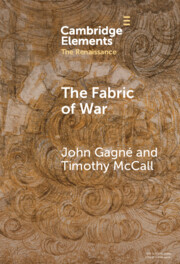Refine search
Actions for selected content:
230 results
Chapter 1 - Unlocking Capacity
-
- Book:
- Letterworlds in Late Nineteenth-Century France
- Published online:
- 16 October 2025
- Print publication:
- 30 October 2025, pp 26-71
-
- Chapter
- Export citation
Traditional Institutions and Cultural Heritage Law: The Case of Benin Bronzes
- Part of
-
- Journal:
- The Journal of African History / Volume 66 / 2025
- Published online by Cambridge University Press:
- 14 October 2025, e20
-
- Article
-
- You have access
- Open access
- HTML
- Export citation
Echoes of History: Legacies of the Benin Bronzes and Restitution Within the Black Atlantic
- Part of
-
- Journal:
- The Journal of African History / Volume 66 / 2025
- Published online by Cambridge University Press:
- 08 October 2025, e17
-
- Article
-
- You have access
- Open access
- HTML
- Export citation
Built Forms, Things, and Urban Belonging - Children of the Soil: The Power of Built Form in Urban Madagascar Tasha Rijke-Epstein. Durham, NC: Duke University Press, 2023. Pp. 376. $109.95, hardcover (ISBN: 9781478020486); $29.95, paperback (ISBN: 9781478025290); ebook (ISBN: 9781478027409).
-
- Journal:
- The Journal of African History / Volume 66 / 2025
- Published online by Cambridge University Press:
- 17 September 2025, e14
-
- Article
- Export citation
A guide to the mechanisms of transformation: The role of materials in cognitive change
-
- Journal:
- Archaeological Dialogues , First View
- Published online by Cambridge University Press:
- 12 September 2025, pp. 1-24
-
- Article
-
- You have access
- Open access
- HTML
- Export citation
3 - Black Catholic Knowledge in the Caribbean
- from Part II - Religion in Place
-
- Book:
- Black Catholic Worlds
- Published online:
- 28 August 2025
- Print publication:
- 11 September 2025, pp 125-161
-
- Chapter
- Export citation
Chapter 3 - Watery City
-
- Book:
- Maritime Relations
- Published online:
- 23 August 2025
- Print publication:
- 04 September 2025, pp 101-139
-
- Chapter
- Export citation
Improving Systems for Processing Public Finds: Digital Technology and Citizen Science
-
- Journal:
- European Journal of Archaeology , First View
- Published online by Cambridge University Press:
- 03 September 2025, pp. 1-23
-
- Article
-
- You have access
- Open access
- HTML
- Export citation
25 - Travel and Communication
- from Part II - Artefacts and Evidence
-
- Book:
- The Cambridge Encyclopaedia of Late Antique Art and Archaeology
- Published online:
- 04 July 2025
- Print publication:
- 31 July 2025, pp 458-476
-
- Chapter
- Export citation

The Fabric of War
- The Material Culture and Social Lives of Banners in Renaissance Europe
-
- Published online:
- 14 July 2025
- Print publication:
- 14 August 2025
-
- Element
- Export citation
The First General Assembly of Virginia: Deerskin, Ruffs and the View from Tsenacommacah
- Part of
-
- Journal:
- Transactions of the Royal Historical Society / Volume 3 / December 2025
- Published online by Cambridge University Press:
- 10 July 2025, pp. 521-537
- Print publication:
- December 2025
-
- Article
-
- You have access
- Open access
- HTML
- Export citation
The cobs in the archaeological context of the San José Galleon shipwreck
-
- Article
-
- You have access
- HTML
- Export citation
The field-ready tea-box adaptometer: colonial nutrition science and/in imperial economies in Malawi
-
- Journal:
- Medical History , First View
- Published online by Cambridge University Press:
- 15 May 2025, pp. 1-16
-
- Article
-
- You have access
- Open access
- HTML
- Export citation
The Material Word: Indigenous Knowledge and Christian Texts in the Braidense Lectionary
-
- Journal:
- The Americas / Volume 82 / Issue 2 / April 2025
- Published online by Cambridge University Press:
- 17 November 2025, pp. 173-217
- Print publication:
- April 2025
-
- Article
-
- You have access
- Open access
- HTML
- Export citation
What Teachers Wear: Working the Wardrobe across 15 Years
-
- Journal:
- Signs and Society / Volume 13 / Issue 2 / June 2025
- Published online by Cambridge University Press:
- 31 March 2025, pp. 167-198
-
- Article
-
- You have access
- Open access
- HTML
- Export citation
17 - Ottoman Science
- from Part II - Perspectives and Methods
-
-
- Book:
- The Cambridge Companion to Ottoman History
- Published online:
- 31 May 2025
- Print publication:
- 20 March 2025, pp 236-250
-
- Chapter
- Export citation
Candlelight and the Yellow Ribbon: Catalyzing Re-Democratization in South Korea
-
- Journal:
- Asia-Pacific Journal / Volume 15 / Issue 14 / July 2017
- Published online by Cambridge University Press:
- 14 March 2025, e4
-
- Article
-
- You have access
- Open access
- Export citation
8 - Global Turns in European History and the History of Consumption
-
-
- Book:
- Globalizing Europe
- Published online:
- 06 March 2025
- Print publication:
- 13 March 2025, pp 106-122
-
- Chapter
- Export citation
9 - Global Material Culture in Early Modern and Modern Europe
-
-
- Book:
- Globalizing Europe
- Published online:
- 06 March 2025
- Print publication:
- 13 March 2025, pp 123-137
-
- Chapter
- Export citation
4 - Showing, Telling, and Not Telling
-
- Book:
- Money and Irish Catholicism
- Published online:
- 20 February 2025
- Print publication:
- 27 February 2025, pp 129-165
-
- Chapter
- Export citation
